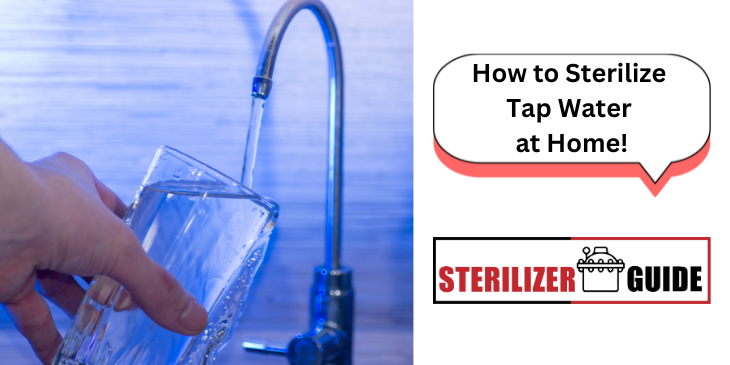Access to clean and safe drinking water is of utmost importance in our modern world. While tap water goes through various treatment processes before it reaches our homes, there may still be contaminants present that we want to eliminate.
Sterilizing tap water at home is a reliable and cost-effective way to ensure its cleanliness. In this article, we will explore effective methods and techniques for sterilizing tap water, ensuring you and your loved ones have access to pure, refreshing water from your faucets.
Whether you’re concerned about microbial pathogens or simply want to enhance the quality of your drinking water, this guide will provide you with all the information you need about how to sterilize tap water at home.
Disclaimer: This article provides information on sterilizing tap water at home for general purposes. It is essential to consider local regulations and guidelines regarding water safety and consult with local authorities or water treatment professionals for specific recommendations.
Understanding the Importance of Tap Water Sterilization
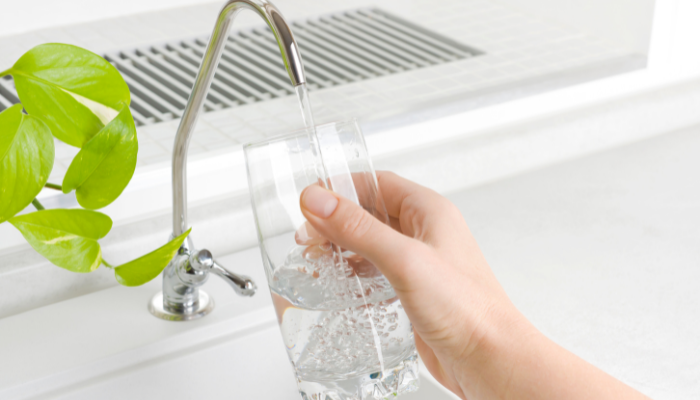
Tap water is treated by water utilities to remove contaminants and make it safe for consumption. However, there may still be residual impurities or microbial pathogens present. Sterilizing tap water at home provides an extra layer of protection, ensuring the water you consume is free from potentially harmful substances.
Proper tap water sterilization safeguards against waterborne illnesses, such as gastrointestinal infections, diarrhea, and even more severe conditions. It is particularly critical for vulnerable populations, including infants, the elderly, and individuals with compromised immune systems. By implementing effective sterilization methods, such as boiling, using water filters, or utilizing chemical disinfection, you can minimize the potential health hazards associated with tap water and enjoy clean, safe drinking water in your daily life.
Common Contaminants in Tap Water
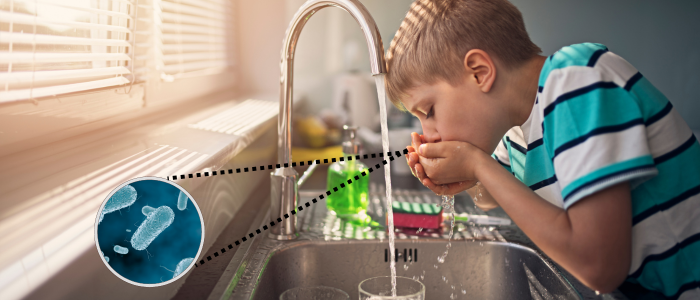
Tap water can contain a range of common contaminants that can impact its quality and safety. One of the primary concerns is microbial contamination, including bacteria, viruses, and parasites. These microorganisms can enter the water supply through various sources, such as sewage leaks, agricultural runoff, or inadequate water treatment. Consuming water contaminated with harmful microbes can lead to gastrointestinal illnesses, respiratory infections, and other health issues.
In addition to microbial contaminants, tap water may also contain chemical pollutants. These can include heavy metals like lead, which can leach into the water from old plumbing systems or industrial activities. Pesticides, herbicides, and industrial chemicals are other potential contaminants that can find their way into the water supply.
Long-term exposure to these chemicals can have detrimental effects on human health, ranging from developmental problems to increased cancer risks. Regular testing and appropriate water treatment methods are essential to mitigate the presence of these common contaminants and ensure the safety of tap water for consumption.
Boiling: A Simple and Effective Tap Water Sterilization Method
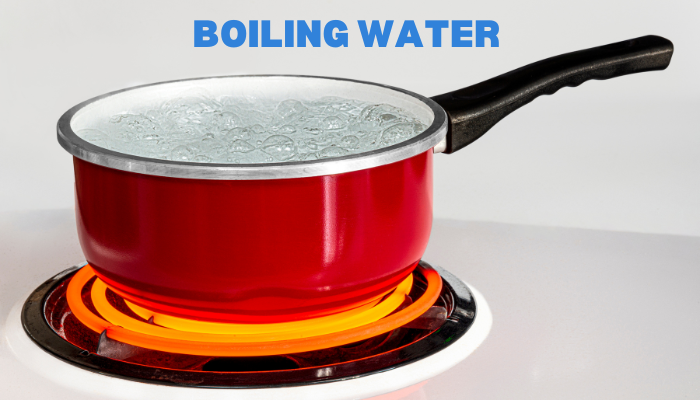
One of the simplest and most effective ways to sterilize tap water is by boiling it. Boiling water kills most types of microorganisms, including bacteria, viruses, and parasites. Follow these steps to sterilize tap water using the boiling method:
Step 1: Fill a Pot
Fill a clean pot with tap water. It’s important to use a pot made of food-grade material, such as stainless steel or glass.
Step 2: Heat the Water
Place the pot on a stove and heat the water until it reaches a rolling boil. Ensure the water is vigorously boiling for at least one minute to ensure effective sterilization.
Step 3: Cool and Store
After boiling the water, allow it to cool down before transferring it to clean, sterilized containers with tight-fitting lids. Store the sterilized water in a cool, dark place to maintain its quality.
Using Chemical Disinfectants for Tap Water Sterilization
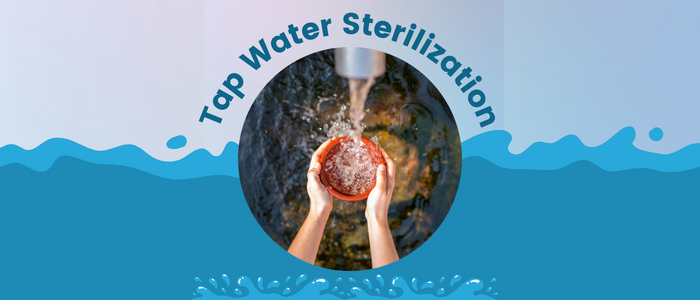
Chemical disinfectants like chlorine and iodine are commonly used to treat tap water and kill microbial contaminants. These disinfectants are readily available and can be used in small doses to ensure the water is safe to drink. However, it’s important to follow the instructions carefully to avoid overexposure to these chemicals.
Note: When utilizing any water sterilization method, it is essential to start with clean tap water. In cases where water is known to be heavily contaminated or compromised, it is advisable to seek guidance from local health authorities or use commercially bottled water for drinking purposes.
Chlorine Treatment
Chlorine is widely used for water disinfection due to its effectiveness in killing various pathogens. Use the 2% solution of chlorine dioxide to treat tap water. Follow the steps below:
- Add 1 fl oz (2 tablespoons) of solution per 30 gallons of water.
- Stir the water and let it stand for 30 minutes.
- If the water smells slightly of chlorine, it is ready for use.
- If not, repeat the process and let it stand for an additional 15 minutes.
Iodine Treatment
Iodine is another chemical commonly used for water sterilization. It is available in tablet or liquid form, specifically designed for water treatment. Follow the instructions provided with the product for the correct dosage and treatment time.
Hydrogen Peroxide Treatment
Hydrogen peroxide is an effective disinfectant for water sterilization. Use 3% hydrogen peroxide solution and follow these steps:
- Add 8 drops of hydrogen peroxide to each gallon of water.
- Stir the water and let it stand for 30 minutes.
- After 30 minutes, the water is ready for consumption.
UV Sterilization: Harnessing the Power of Ultraviolet Light
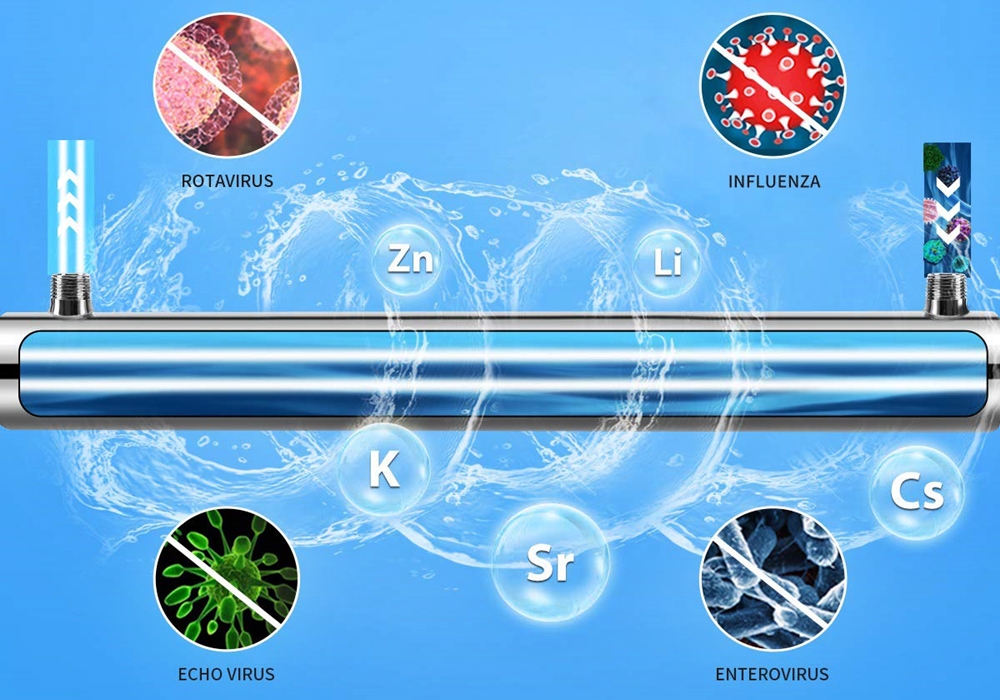
UV sterilization devices are gaining popularity as an efficient method to kill microorganisms in tap water. These devices emit ultraviolet light, which damages the DNA of bacteria and viruses, rendering them harmless. Follow these steps to use a UV sterilization device for tap water sterilization:
- Purchase a UV sterilization device designed for water treatment. Ensure it meets the necessary quality standards.
- Install the device as per the manufacturer’s instructions, typically attaching it to your water supply line.
- Turn on the device and let the water flow through it for the recommended duration to allow effective sterilization.
Be sure to maintain the device as instructed by the manufacturer to guarantee optimum performance.
Filtration Systems for Tap Water Sterilization
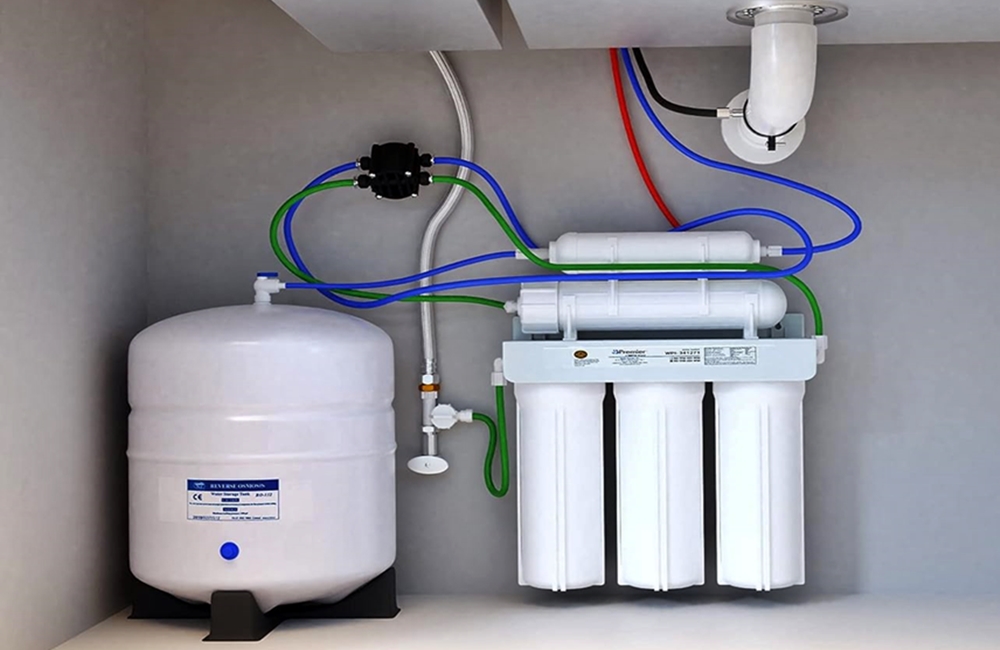
Water filtration systems are designed to remove impurities and contaminants from tap water, including bacteria, viruses, and heavy metals. These systems typically use a combination of physical and chemical processes to ensure the water is safe to consume. Popular filtration methods include activated carbon filters, ceramic filters, and multi-stage filtration systems.
Reverse Osmosis: Purifying Tap Water at Home
Reverse osmosis is a highly effective filtration system that removes impurities from tap water by using pressure to force it through a semi-permeable membrane. This process eliminates bacteria, viruses, heavy metals, and other contaminants, ensuring clean and sterilized water for consumption.
Distillation: A Time-Tested Method for Sterilizing Water
Distillation involves heating tap water to create steam, which is then condensed back into liquid form. This process effectively removes bacteria, viruses, minerals, and other impurities. Distilled water is considered highly sterile and can be used for various purposes, including drinking and cooking.
Electrolyzed Water: A Modern Approach to Tap Water Sterilization
Electrolyzed water systems use a process called electrolysis to produce two solutions: one with a high concentration of disinfecting agents and another with a high pH value. These solutions work together to effectively kill microorganisms and sanitize tap water, providing a safe and eco-friendly sterilization method.
Ozone Treatment: Purifying Tap Water with Ozone Gas
Ozone treatment involves injecting ozone gas into tap water, which acts as a powerful disinfectant. This method eliminates bacteria, viruses, and other harmful contaminants, leaving behind sterilized water. Ozone treatment is highly effective and doesn’t leave residual taste or odor in the water.
Ion Exchange: Removing Impurities from Tap Water
Ion exchange filtration systems use resin beads to remove impurities from tap water. This method is particularly effective in removing heavy metals, such as lead and mercury, by exchanging them with harmless ions. Ion exchange systems can contribute to tap water sterilization by reducing the presence of various contaminants.
Advanced Oxidation Processes for Tap Water Sterilization
Advanced oxidation processes (AOPs) involve using powerful oxidants, such as hydrogen peroxide or ultraviolet light, to eliminate organic contaminants, bacteria, and viruses from tap water. AOPs are known for their effectiveness in sterilizing water and can be employed in combination with other filtration methods for enhanced purification.
Using Solar Disinfection to Treat Tap Water
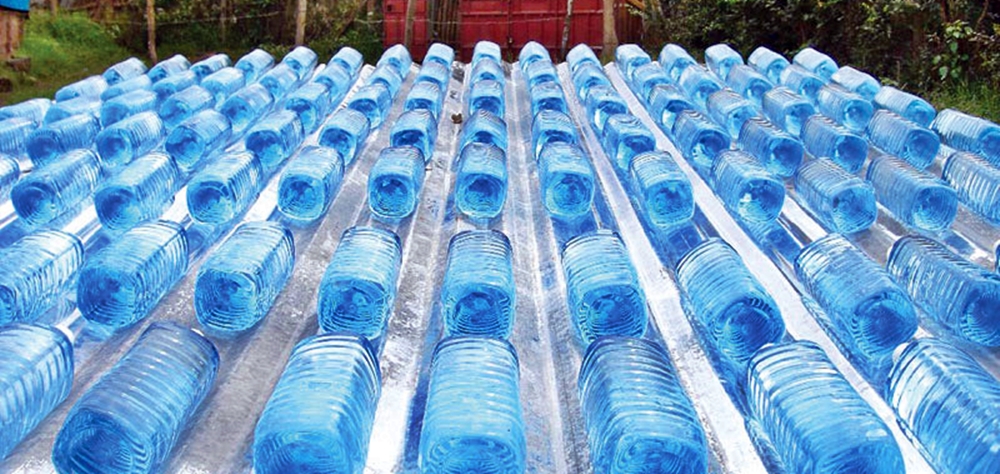
Solar disinfection, also known as SODIS, utilizes the sun’s ultraviolet rays to sterilize tap water. This method involves filling clear plastic bottles with water and exposing them to direct sunlight for several hours. While SODIS is a simple and low-cost approach, it may not eliminate all types of contaminants and is best suited for emergency situations or when other methods are not available.
You may also read: Dirty Water? No Thanks! Here’s How to Sterilize 5-Gallon Water Jugs for Safe Drinking!
Precautions and Safety Measures When Sterilizing Tap Water
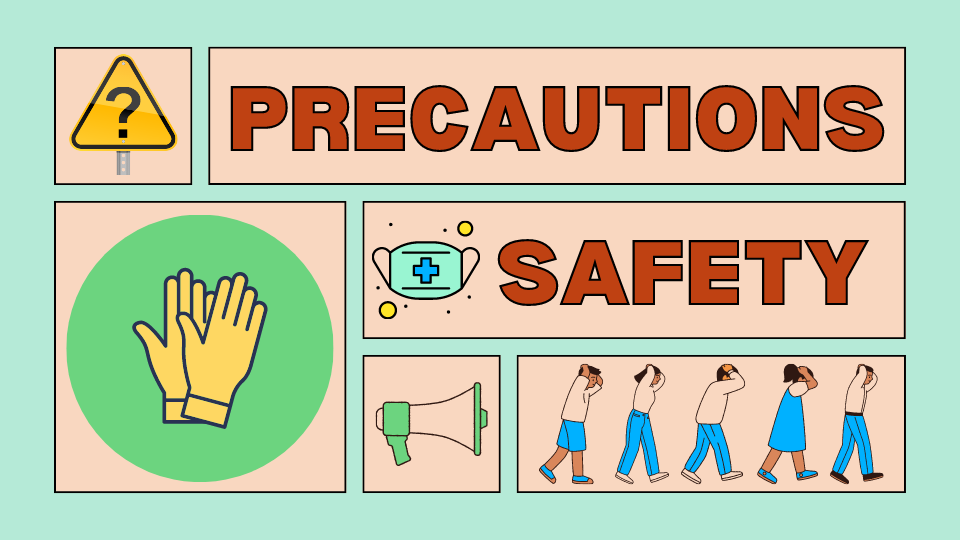
When sterilizing tap water, it’s important to follow certain precautions. Use only clean water from a trusted source as the starting point. Additionally, carefully read and follow the instructions provided with each sterilization method to ensure proper usage and effective results.
Storing Sterilized Tap Water: Best Practices
After sterilizing tap water, it’s crucial to store it correctly to maintain its quality. Use clean, food-grade containers with tight-fitting lids to prevent contamination. Store the water in a cool, dark place away from direct sunlight and chemicals. Regularly check the containers for any signs of damage or deterioration.
Monitoring Water Quality After Sterilization
Regularly monitoring the quality of sterilized tap water is essential to ensure its ongoing safety. Consider using water testing kits to check for any potential contaminants or changes in water quality. Follow the manufacturer’s instructions for accurate and reliable results.
Additional Tips for Ensuring Clean Tap Water at Home
In addition to sterilizing tap water, there are several other steps you can take to maintain clean and safe water in your home. These include regularly cleaning and maintaining your water storage containers, inspecting and replacing water filters as recommended by the manufacturer, and staying informed about any local water quality advisories or concerns.
Common Myths about Tap Water Sterilization
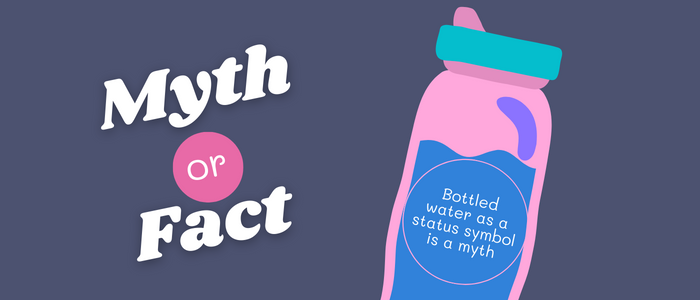
There are several myths surrounding tap water sterilization that need clarification:
Myth: Bottled water is always safer than tap water.
Fact: Tap water that has been properly sterilized can be just as safe as bottled water, and it is more eco-friendly and cost-effective.
Myth: Boiling tap water multiple times improves its quality.
Fact: Boiling tap water for longer periods or repeatedly does not enhance its quality. One round of boiling is sufficient for sterilization.
Myth: Using more bleach or chemicals guarantees safer water.
Fact: Using the recommended dosage of bleach or water purification tablets is sufficient for effective sterilization. Using excess amounts can be harmful.
Myth: Filtering tap water removes all contaminants.
Fact: While filters can remove many impurities, they may not eliminate all microorganisms. It is important to choose filters that are specifically designed for removing bacteria and viruses.
Wrapping Up!
Ensuring the safety and cleanliness of tap water at home is crucial for maintaining good health. By following the methods mentioned above, you can effectively sterilize tap water, providing an additional layer of protection for you and your family.
Remember to choose the method that best suits your needs, follow proper guidelines and safety precautions, and regularly monitor the water quality to maintain optimal results.
Consider local regulations and consult with water treatment professionals for specific recommendations. Stay hydrated and enjoy the peace of mind that comes with knowing your tap water is pure, safe, and ready for consumption.

